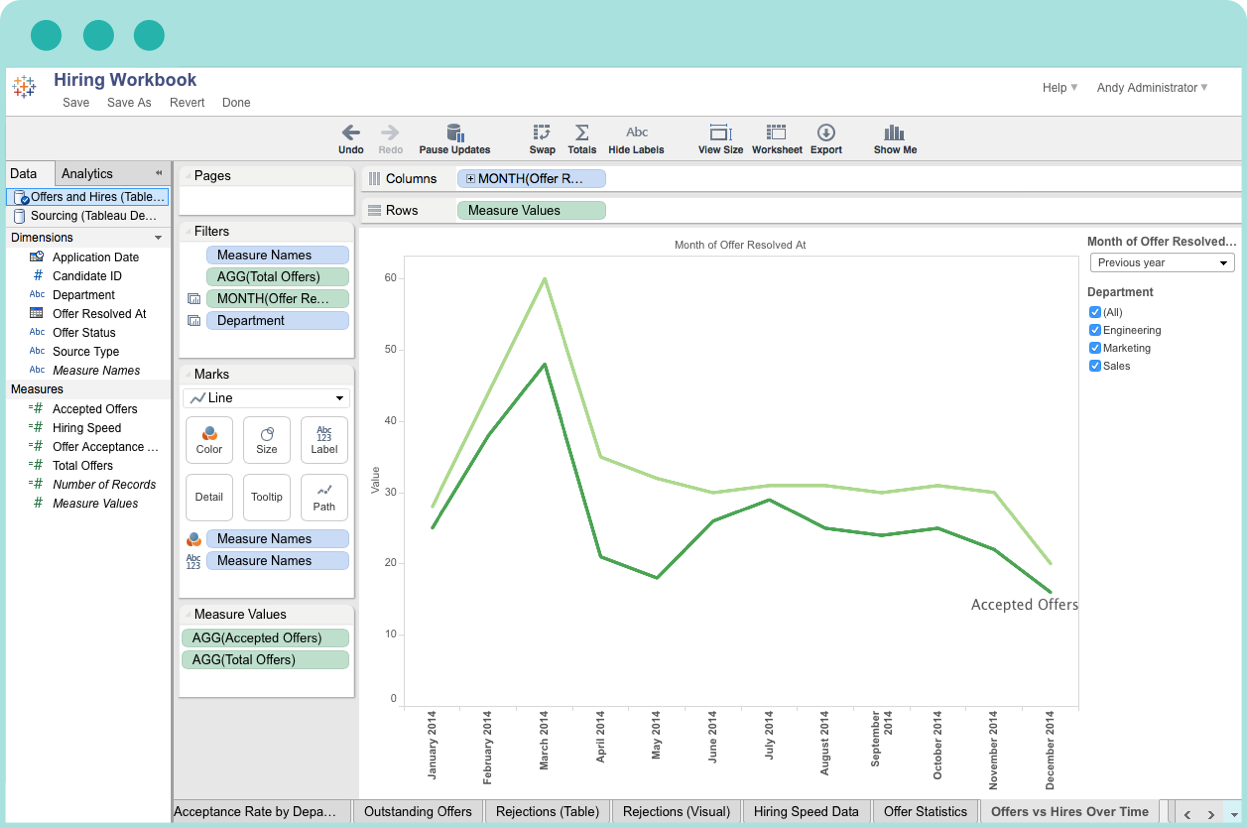5 Recruiting Metrics That Matter When Measuring Success
Recruiting in a perfect world goes something like this:
Step 1: Post the job opening for the position you need to fill.
Step 2: Fill that position with a qualified candidate.
Step 3: Pop the champagne bottles because you’re a recruiting machine!
Here’s the reality: Measuring the success of your recruiting efforts requires more than answering the question, “Is this position filled or not?”
With so many factors to consider, you need to track the right recruiting metrics to truly understand where you’re winning and where you’re not.
Here are 5 recruiting metrics that your organization should start measuring today, along with best practices for using recruiting software to easily track them.
Retention Rate

Making sure you hire workers who stay is vital—the cost to replace an employee ranges anywhere from 30 to 400 percent of their salary, according to HR news site TLNT.
Chad Macrae, founder of consultancy Recruiting Social, says retention is the most important metric because it’s the ultimate way to gauge a good fit between employer and employee.
“When you’ve placed a candidate that is happy in their role and stays in the position, then you know that you did a good job sharing the company’s compelling story,” he says.
You can measure retention company-wide or for a specific role, and the recommended period of time is often a year or longer.
Qualified Candidates per Opening

You wade through hundreds of job applications and resumes, then select a few to move on to an interview. These are your qualified candidates. It’s important to measure how many of those candidates respond when a position opens.
Maia Josebachvili, vice president of strategy and people for recruiting platform Greenhouse, says this offers a chance to course correct instead of just contemplating past mistakes.
“By tracking qualified candidates, you give people more actionable goals that they can hit on a day-to-day or week-by-week basis rather than total hires,” Josebachvili says.
Filtering by source—referral, social media, job fair or otherwise—will show which outlet is providing the most qualified candidates. This way, you know where to direct your recruiting efforts.
Furthermore, once you learn how many qualified candidates it takes to fill a position, you can set goals for future hiring. For example, if it has typically taken six qualified candidates to fill a call center position in the past, set a goal at the onset to find six qualified candidates before you move to the interview stage.
Days to Offer

Time is a precious commodity and something you don’t want to waste in the recruiting process—an empty seat usually means lost productivity.
Whereas “time per hire” represents the time from job posting to starting date, “days to offer” covers a tighter window. This metric shows how long it takes for an applicant to complete the process once they’re in the funnel.
Shortening days to offer can be a big boon in grabbing top talent:

“The very best and most wanted candidates are snagged up pretty quickly, so the companies that take too long in their process tend to lose the best candidates and not get their offers accepted … We’ve seen a big correlation between an increase in days to offer and offer rejection.”
Maia Josebachvili, Vice President of Strategy and People, Greenhouse
You should also measure the smaller milestones in between. Macrae offers some examples:
How long does it take for a recruiter to reach out after a candidate applies?
How long does it take for a hiring manager to set up an interview?
How long until the candidate hears back after an interview?
Knowing where the bottlenecks are in your recruiting process can tell you where improvements are needed, or who on your team is falling behind.
Offer Acceptance Rate

You finally have a job offer accepted—but it took 20 offers to get it. This is a sign that your recruiting process simply isn’t enticing candidates. Your acceptance rate shows you the strength of your entire candidate experience, and whether or not it moves qualified applicants to sign on the dotted line.
Don’t rig the game, though. If you do a lot of massaging and back-and-forth with candidates to all but guarantee an acceptance, you won’t learn anything. The goal is to send an offer that you hope is good enough for them to accept. If they don’t, be sure to create avenues for feedback to help you figure out where it fell short.
Hires to Goal

The metrics along the way are important, but less so if you’re still not meeting your hiring goals. Hires to goal gives your team a clear indicator of how many hires they need to land before reaching their monthly, quarterly or annual target.
“All of the other metrics lead to hires to goal,” Josebachvili says. “At the end of the day, knowing how you’re tracking towards your hiring goal is the number one thing you should be focused on.”
Best Practices for Tracking Recruiting Metrics
With these important metrics in mind, here are some best practices on how to keep track of them:
Ditch the spreadsheet. Tracking these metrics by hand can be an incredibly time-intensive process. It can distract you from what really matters: hiring top talent. With the right recruiting software solution, track these metrics automatically, generate standardized reports and routinely keep stakeholders in the know.

Greenhouse Analytics
Track costs—but don’t obsess over them. What’s the value of an amazing employee? This isn’t easily measured. The same goes for acquisition and recruiting costs, which can include everything from ad buys to your recruiters’ salaries. Track your costs at a high level to see how they fluctuate, but don’t think of it as a must-have metric.
Avoid “analysis paralysis.” There’s a reason we’re focusing on five metrics instead of 30. At a certain point, you can’t see the recruiting metric forest from the trees. You’ll become focused on measuring instead of on improving.

“I’ve seen big companies get a lot of data and not know what to do with it. If you take a few metrics that cover each of the basic parts, you’ll make improvements in a much more efficient and real-time way.”
Maia Josebachvili, Vice President of Strategy and People, Greenhouse
With these metrics and best practices in mind, go forth and save the bubbly for when your recruiting efforts are truly making their mark.